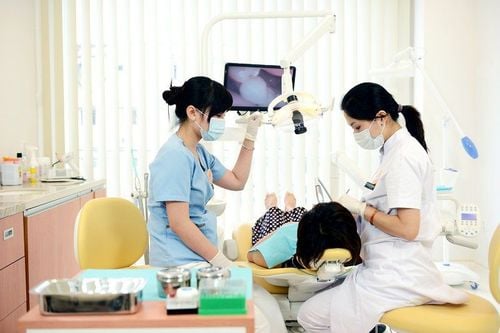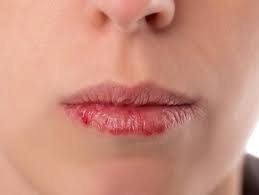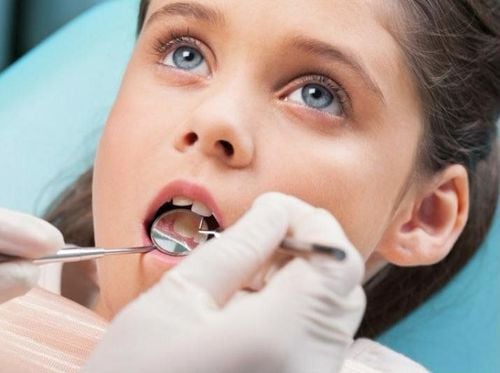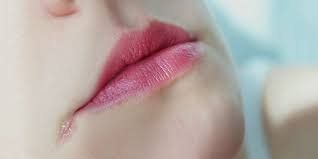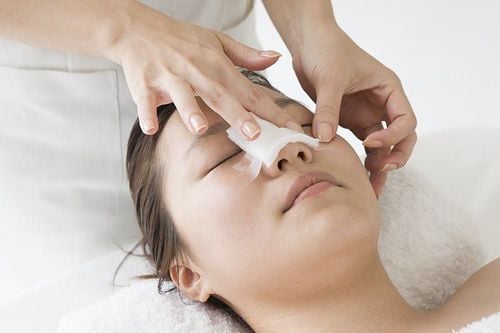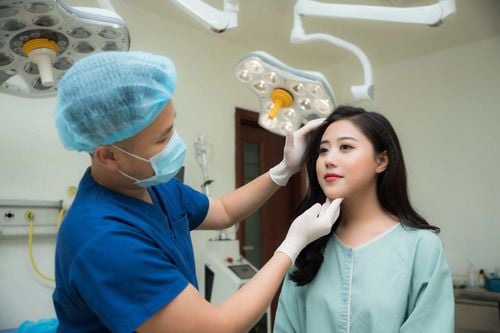This is an automatically translated article.
Cheilitis can be an acute or chronic condition with common symptoms such as redness, dryness, cracking, scaling, itching and burning pain of the lips. There are many different types of cheilitis, the treatment should be based on the diagnosis to determine the cause to have the appropriate method.
1. Contact cheilitis
Contact cheilitis (English name is contact cheilitis) in adults and children caused by many different causes.
Causes of contact cheilitis:
Contact cheilitis in children: Due to some synthetic odorants such as Bacitracin, Bronopol, Cobalt dichloride, Cocamidopropyl betaine, Formaldehyde, Methylchloroisothiazolinone, Neomycin, Neomycin. Adult contact cheilitis: Due to some potentially irritating synthetic chemicals in toothpaste, floss, mouthwash, benzophenone-containing lipstick, nail polish, latex, or allergy to needles type of orthodontic appliance... Treatment of contact cheilitis includes:
Use of lip moisturizer. Limit or avoid exposure to irritating chemicals. Topical corticosteroids are applied twice a day and used for 1-2 weeks to inhibit calcineurin.
2. Infective cheilitis
Infective cheilitis (English name is infective cheilitis) is mainly caused by viruses, bacteria, and parasites. In particular, some types of cheilitis can be acute or chronic with manifestations of edema, swelling, pain, cracking, scaling, and itching of the lips.
Causes of infectious cheilitis:
HSV, HPV, varicella zoster virus. Due to bacteria syphilis, staphylococcus aureus, streptococcus or bacteria that grow in the mouth, gums, teeth affecting the lips. The parasite leishmania, the fungus Candida . Favorable factors create conditions for bacteria, viruses, fungi, and parasites to cause cheilitis such as chronic salivation (due to sagging lips), deviated lip angle (due to dentures), anemia, body immunodeficiency. Treatment of infectious cheilitis:
Candida cheilitis: Apply clotrimazole or miconazole with a dose of 2 times a day. Apply for about 1-3 weeks and if symptoms have not improved, continue to use. Bacterial cheilitis: Apply fucidin or mupirocin.
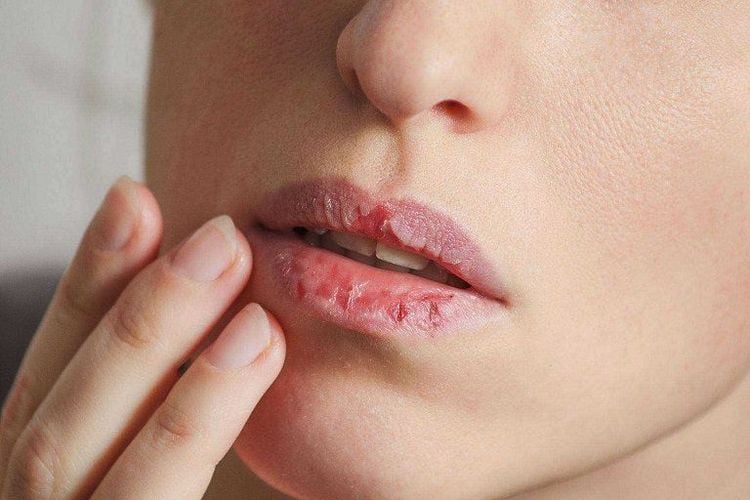
Viêm môi nhiễm trùng chủ yếu do các loại virus, vi khuẩn, ký sinh trùng gây ra.
3. Light cheilitis
As the name suggests, actinic cheilitis (English is actinic cheilitis) is caused by exposure to the sun, usually on the lower lip with dry, crusty, and rough scabs. This is a type of dysplastic, precancerous lesion.
Related to the light factor, there are also itchy papules caused by sunlight, often appearing on the skin of the face, lips and hands, places exposed to a lot of sunlight.
Light cheilitis is common in the following groups:
People with skin type I or II. People who often work outdoors. People who live in extreme dry and hot climates. In addition, the following factors also increase the risk of light cheilitis such as:
Age. Male. Have a habit of smoking regularly. Sensitivity to light (albinism or dry pigmented skin...). Meanwhile, papules caused by sunlight are common in young people and have skin type IV (hypersensitivity).
Before choosing a treatment method for cheilitis cheilitis, it is necessary to make a differential diagnosis with squamous cell carcinoma by making histopathology with cases where clinical examination shows the lips are swollen, slippery, and ulcerated.
Treatment of cheilitis includes methods:
Cryotherapy with liquid nitrogen. Limit and avoid sun exposure. Apply diclofenac, imiquimod, 5 FU... For itchy papules caused by sunlight, treatment methods are as follows:
Limit, avoid sun exposure; use sun protection measures such as wearing wide-brimmed hats, face coverings, sun-protective clothing... Apply topical corticosteroids. Use anti-malarial drugs, antihistamines, drugs containing pentophyxillin, cyclosporin...
4. Granulomatous cheilitis
Granulomatous cheilitis is a hypersensitivity (slow) condition that causes a granulomatous (but not infectious) reaction. This condition is usually seen on one side of the lower lip with the first tender swelling, then thickening and firming but no pain.
Another syndrome that also manifests with granulomatous cheilitis, cracked tongue, and facial paralysis is Melkersson-Rosenthal syndrome. To treat this syndrome, it is important to distinguish the diagnosis from trauma caused by lip biting, angioedema, or sarcoidosis, Crohn's disease.
Treatment of Melkersson-Rosenthal syndrome also uses topical corticosteroids, in severe cases, systemic corticosteroids must be used.
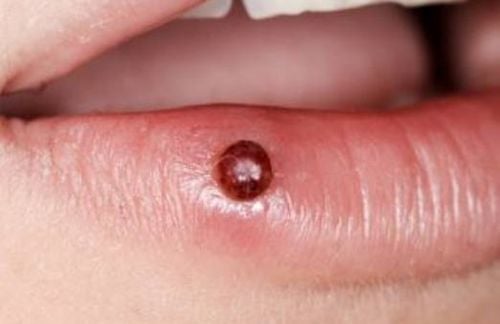
Viêm môi u hạt là tình trạng quá mẫn gây ra phản ứng u hạt, nhưng không nhiễm trùng.
5. Scaly cheilitis
Exfoliative cheilitis is an inflammation of the lips due to frequent licking, biting... or psychological disorders. The typical symptom of the disease is dry lips, scabs and then peeling, this process happens quickly.
Before treating with moisturizing measures, using mupirocin, tacrolimus, and psychotherapy, it is necessary to distinguish between squamous cheilitis with cheilitis, caused by light or plasma cell infiltration.
6. Benign cheilitis
This is plasma cell cheilitis (English is plasma cell cheilitis), so far the cause of the disease has not been clearly identified. Histopathology showed that the superficial dermis was densely infiltrated by plasma cells.
Because of the unknown cause, the treatment of cheilitis is still very limited, mainly using topical corticosteroids or injections, calcineurin inhibitors and laser irradiation.
7. Malignant cheilitis
Cheilitis glandularis is an inflammation of the oil and salivary glands, usually on the lower lip. This is a rare disease, where small holes can be seen in the lining of the mucosa, causing pain, adhesion and burning of the lips.
Treatment of malignant cheilitis requires the use of topical corticosteroids or injections. In case of infection, antibiotics are used, and if the infection is severe and the damage is extensive, surgery is required.
In summary, there are many different types of cheilitis and its causes. The treatment of cheilitis depends on the diagnosis of the cause of the disease. Therefore, when noticing abnormal signs on the lips, the patient should go to a medical facility for examination and diagnosis.
Please dial HOTLINE for more information or register for an appointment HERE. Download MyVinmec app to make appointments faster and to manage your bookings easily.




